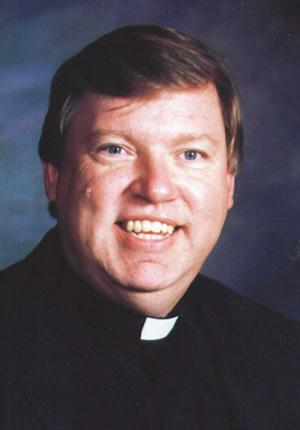
By Barb Arland-Fye
The first round of parish planning meetings in the Davenport Diocese wraps up Sunday, Oct. 3, at St. Paul the Apostle Church in Davenport (3 p.m.) and St. Joseph Church in DeWitt (5 p.m.).
Questions raised during meetings at five other locations have prompted the Diocesan Planning Commission to begin compiling a Q&A list to share as parishes continue to explore how to minister in the future with fewer priests. The Catholic Messenger will publish that list in an upcoming issue.
“It is important to have answers to questions raised at the planning meetings,” said Father Jim Vrba, pastor of St. Mary Parish in Solon, and co-chair of the Diocesan Planning Commission (DPC). “But we also need a way to ensure that our responses are coordinated with the planning commission and Bishop Martin Amos.”
The DPC also is looking at ways to show parishes how the planning process can benefit them now, as well as in looking to future collaboration with other parishes. In response to one question raised at the grassroots planning meetings, Fr. Vrba shares an idea on how to complete Report No. 1.
“Parishes don’t necessarily have to have a huge meeting to gather the information needed for Report No. 1. What we are planning to do in Solon is to talk about the planning process during weekend Masses. We’ll have cards available in the pews for parishioners to write down (on one side) what they see are the ‘strengths’ of the parish. What is the parish doing well? What makes parishioners proud to be a member of St. Mary’s, Solon? On the other side of the card we’ll invite them to write down areas where we need to grow as a parish. What could we be doing better?”
Parishioners’ responses will be transcribed onto blank newsprint and then posted as pages in the parish hall. The following Sunday, parishioners will be invited to go to the parish hall to review responses. “People can put a check mark on the items they support. They can also add comments and ideas to each page.”
Parish leaders will then compile and summarize the responses for Report No. 1. “This way also invites people of all age groups to offer input, including the youth of the parish.”
“The great value of this process is that it gives the parish a good response from parishioners to help with ongoing parish planning, as well as completing Report No. 1 for the commission,” Fr. Vrba said. The same process could be used for parishes that already are clustered. Parishioners’ responses could be transcribed onto a master copy for their review.
“Parishes may find other creative ways to complete Report No. 1. The important aspect is to involve as many people as possible so that all parishioners can have an opportunity for input and be kept informed of the planning process.” The other benefit of preparing this first report is that parishes will have immediate input from parishioners to share with their respective Local Area Planning Committees. That input will help the local committees hone their respective planning and projects.
The second report asks parishes to identify how they can now be cooperating with neighboring parishes, which two or three neighboring parishes they would most likely collaborate with, and how the diocese can strengthen outreach to parishes. Parishes are also asked to identify two lay representatives who will serve on the Local Area Planning Committee. The planning process will continue through 2011, and The Catholic Messenger will provide progress reports and other important information about the planning process. You may also visit the diocesan website for further information: www.davenportdiocese.org.








